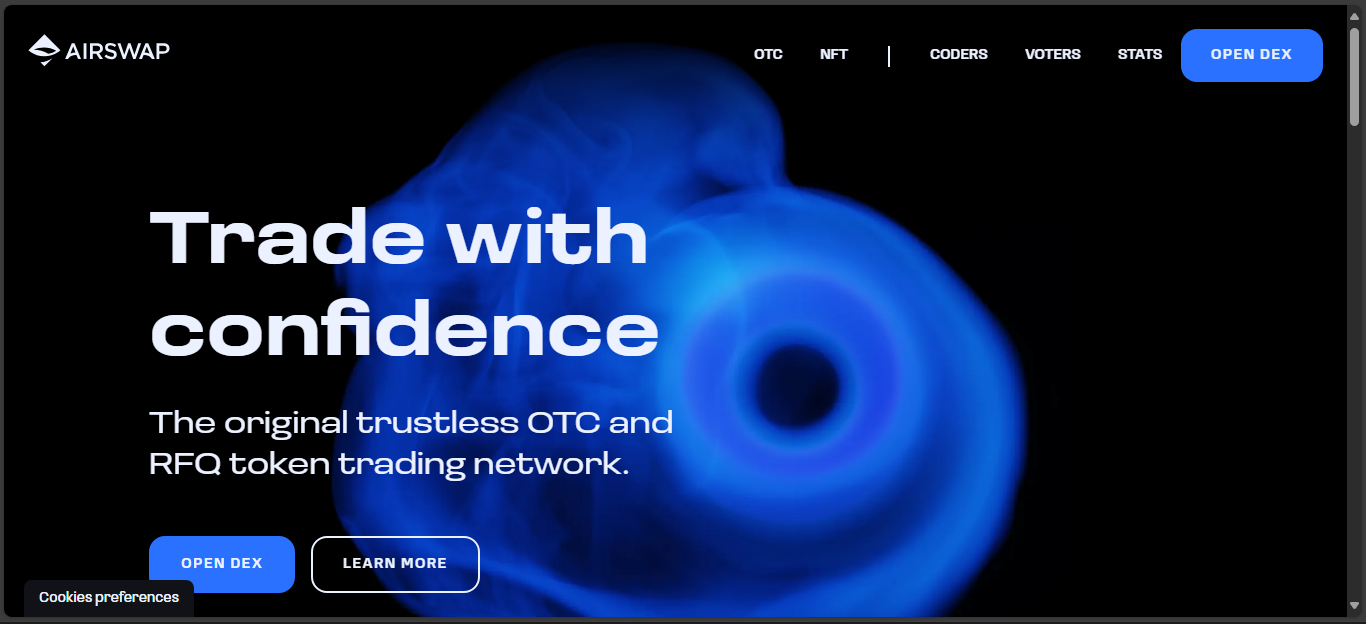Airswap – Exchange Review

Origin and mission
Airswap started in 2017 to provide ERC-20 trading without order books. Users trade directly with each other, connecting through a maker-signer matching system. No deposits, no accounts, no custodians. The idea was simple – pure peer-to-peer on Ethereum.
How the protocol works
Airswap uses an off-chain negotiation and on-chain settlement design:
- Makers must stake 250 AST tokens to provide liquidity.
- Trades are fee-free, with only gas costs.
- Users connect wallets, agree on terms, and settle directly on Ethereum.
It was marketed as a trustless, non-custodial alternative to centralized exchanges.
Token model
The AST token underpins the system:
- Required staking for makers to list liquidity.
- Governance rights for holders.
- No trading fees, but limited incentives beyond staking.
Today, AST has a small market cap, low volume, and little governance participation.
Use and activity
By 2025, Airswap remains technically operational but largely inactive:
- Daily trades often total under a few hundred thousand dollars.
- Most token pairs see near-zero liquidity.
- Active use is limited mostly to AST-related pools.
The platform functions, but trading activity is minimal.
Security and trust
Strengths include:
- Non-custodial design – users keep control of their assets.
- Open-source codebase.
- No KYC requirements.
- No major hacks or exploits reported.
Risks mainly stem from illiquid markets, which make real trading unreliable.
Ecosystem and supported assets
Airswap supports only ERC-20 tokens on Ethereum. There are:
- No fiat rails.
- No derivatives.
- No multichain integration.
Some developer tools exist (like indexes), but they remain niche and underused.
Interface and UX
The interface is extremely minimal:
- Wallet connection, maker selection, trade confirmation.
- No charts, analytics, or advanced tools.
- No mobile app.
For some, this simplicity feels refreshing. For most traders, it feels empty and outdated.
Pros and cons
Pros
- Pure peer-to-peer trading model.
- No custody or account requirements.
- Fee-free trades (gas only).
- Simple and secure for those who value self-custody.
Cons
- Extremely low liquidity and volume.
- Limited to ERC-20 tokens only.
- Weak governance and token utility.
- Minimal user interface and no advanced features.
- Negligible adoption in 2025.
Final verdict
Airswap was once innovative, offering fee-free ERC-20 swaps without custody or order books. In 2017, that was groundbreaking. But by 2025, it feels like a relic of early DeFi experiments.
The protocol still runs, but volume is gone, users have moved on, and AST governance is inactive. For developers, it may still serve as a reference protocol. For traders, it’s irrelevant. Airswap survives as a quiet corner of Ethereum, alive in code but abandoned in practice.
Disclaimer
“This content is for informational purposes only and does not constitute financial advice. Please do your own research before investing.”






